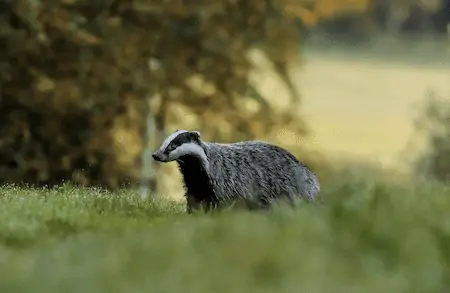I guess you are already familiar with the fact that there are several small game animals in different parts of the world, most of which are edible, contrary to what many think.
Now, if you’re curious about – ‘Do people eat skunk?’ the short answer is yes. These foul-smelling critters belong to the edible small game family and make for a nutritious meat source. However, there are caveats.
While skunk meat can serve a decent meal in the wilderness, making it suitable for consumption can be quite a challenge.
When killing one, you must prevent it from spraying. Besides, there’s a potential risk of rabies transmission, while the deglanding process could also be a pretty tough game.
Still, it’s all pretty much doable, and up ahead, we’ll explore how in greater detail.
Who Eat Skunk?
There are numerous examples of skunk meat being eaten worldwide, not just by Bear Grylls on Man vs. Wild. History says, Native Australians, as well as a few groups in Mexico and South America, have been eating skunk meat for centuries, besides diverse tribes from Africa.
Among North American civilians, skunk meat made its way onto plate during the late 1800s, thanks to Native American tribes, whose unique roasting techniques attracted Canadian and American trophy hunters to try it out themselves.
Sport hunters and adventurers are still keeping the tradition alive today by exploring nature in unique ways, including indulging in various bizarre foods.
Surprisingly yet, skunk doesn’t make that much a challenging addition to raccoons, snails, guinea pigs, or rattlesnakes for those who have already tried them.
Is It Safe to Eat Skunk Meat?
Skunk meat is safe for consumption, but there are always risks involved. Before anything else, you must be sure to take out the small bacteria-infested bag from the anus with utmost care.
When done hastily or improperly, the pus-filled sac will spill all its bacteria and foul smell, contaminating the meat.
When you realize you’ll have to prepare the meat carefully to prevent the notorious skunk odor, you’ll also have to remember that these creatures may carry the rabies virus, which means even a tiny cut to your finger during the preparation could prove deadly.
Fortunately, though, rabies doesn’t last long outside the host’s body. You can get rid of it by cooking the skunk for a few minutes at 120-degree Fahrenheit.
You can cook a skunk over the recommended heat if you have doubts about whether it’s rabies-free or not.
Are All Types of Skunks Edible?
Yes and no. Even though you can choose to eat any skunk species, it’s a good idea to avoid the stray ones around your neighborhood.
The reason for this is that even though all of them are omnivores, the stray ones typically feed on smaller animals like rats and moles or rotten leftovers, which might carry parasites, viruses, or deadly diseases.
On the other hand, wild skunks eat a varied diet composed of herbs, grains, and meat that is more balanced than their backyard-dwelling counterparts.
Thus, the chances of virus infestation are far less likely because of the controlled digestion process.
What Does Skunk Taste Like?
Skunk meat has a taste somewhat similar to rabbits and raccoons. The flavor, however, is distinctly gamey.
Essentially, the taste comes from fat; hence the enjoyment may vary for everyone. You may find it a bit bonier than rabbit meat, but the texture is pretty similar. With closed eyes, you may not be able to tell them apart.
Much like rabbits, skunk meat is also very lean because of its active lifestyle in the wild. That’s why it tastes best when it has been tenderized before cooking.
A traditional method of doing so is by blending seasonings, marinating meat, or slow-cooking it. It’s always a bad idea to overcook meat since it will end up tough, both in taste and texture.
Alternatively, you can remove some fat before seasoning and cooking if you aren’t sure you want the more potent flavor.
How Do You Eat a Skunk?
If you’ve decided to try skunk meat for the first time, here are the things you need to know.
The first step in deciding whether to include skunk on your menu is, of course, to trap it. Even though the trapping process might put some people off, it should be more straightforward than what follows.
#1. Hunting Skunks
You need to know what to do when encountering a skunk, just like when dealing with every other wild animal.
When threatened, skunks use a foul-smelling spray, their main defense line, released from their anal glands. Most predators are scared off by the smell, and the scent is so horrible that only 5% of their deaths result from predation.
This means, however, that you have a good chance of finding plenty of skunks during your search. Since their ability to spray depends on their tails moving upward, you may be able to pin one down with a heavy blanket by sneaking up on it and breaking up your silhouette.
If you get too close to a skunk, it may use its teeth or claws in defense. Although it may not be as dangerous as a much larger game’s paws, the rabies risk could be problematic. So, if you must approach the skunk, be sure to wear protective clothing.
Shooting may provide an even easier route. Just put a blob of peanut butter as a lure and take your position nearby. However, you must keep a few things in mind.
Skunks almost always spray when shot in the head, so it’s a bad idea to shoot them there. Any time you plan on shooting, opt for lung shots instead, so there’ll be lesser risks of such occurrences. The .22 caliber is a good choice for such a target.
It’s also crucial not to shake the retrieved carcass too much on your return.
#2. Cleaning and Skinning
You must clean the critter well after dispatching it. Wear rubber gloves and wash it thoroughly with warm, soapy water; pay close attention to the anal region and the crevices.
Next, hang it by its hind legs to dry. Then using your knife cut up the legs and ring the feet, just as you would any other animal.
#3. Gutting and De-Glanding
Here’s where it gets tricky. You must free up the entire gut system as much as possible.
Instead of severing the tube, you’ll want to cut through the anal passage and the pelvis (only the outer portion), allowing the tract of connective tissue to slide easily between them. Do this only with your finger.
Once you have freed the connective tissue, you can tie the intestines together in two spots to cut in between, ensuring no liquid spills.
Avoid touching the region surrounding the anus more than necessary, for the spilled liquid may contaminate the meat, making it taste like burnt tires and garlic. And you can make it worse with each movement of the tissue.
After removing the anal glands carefully, it’s as easy to peel off the rest of the skin. But be sure to look closely for any fat tissues containing the scent glands.
The underarms, shoulders, and neck are likely to have some. The glands resemble small, pale beans. If you leave any of them in, you’ll end up with a bland taste. However, it won’t be that challenging if you’ve de-glanded raccoons before.
#4. Brining
Following the de-glanding, it’s a good idea to brine the meat as it neutralizes the skunk’s gamey flavor. It also helps denature the meat’s proteins and retain moisture.
In addition, brining slows bacteria growth.
#5. Cooking
Ideally, you should have your skunk immediately cooked after you’ve killed and prepared it to reduce contamination risks. Stewing is the traditional method of cooking, with the meat being very lean.
The final meat preparation will not require any additional special techniques if you’ve done everything correctly, but you can feel free to experiment with your own ideas. To serve, just drizzle a little olive oil and sprinkle it with salt and pepper.
What Are the Best Skunk Parts to Eat?
Skunk meat belongs to the game meat family. Therefore, as with any meat, the liver, the heart, and the kidney are the most desirable parts to consume due to their nutritional value and high vitamin content.
However, you’d be better off avoiding the stomach since skunks eat carrion while they’re also omnivores. Therefore, their stomachs are likely to contain raw or rotten meat and insects. The same applies to the intestines.
Skunk brains are also not very appetizing. Eating them can lead to prion disease, which has various health consequences. Skunk brains are also excessively rich in fat and cholesterol, which may contribute to high blood pressure.
So, it’s best to stick to lean meats when eating a skunk.
Frequently Asked Questions
#1. What are the benefits of eating skunk meat?
Skunk meat shares the same amount of calories as rabbit meat, while they’re also a great source of protein. The lean meat is free of additional fat, which makes for an excellent meal for maintaining fitness in the wilderness.
#2. Do skunks eat rats?
Skunks are omnivores, which means they eat both meat and vegetables. They’ll eat mice, rats, and moles to a size. They’ll also eat insects.
#3. What are the risks of eating skunk meat?
So long as you’ve prepared your skunk meat as nicely as we’ve discussed above, there’ll be lesser health risks. Nevertheless, it’s always possible to come across a virus-infested skunk and cook it.
Other than rabies, the viruses can be hepatitis, tularemia, or leptospirosis, which can prove to be dangerous for your health in different ways, if not lethal.
#4. What if the bacteria-filled sac leaks and contaminates the meat?
If the leakage contaminates the meat, it’s better to discard it altogether than try to clean and cook it. The fluid is so potent and contagious; you may not get rid of it entirely regardless of the process you follow once it spreads out.
#5. Should you consume roasted skunk meat?
Roasted skunk is a traditional dish among Native Americans, and you can try it out too. However, roasting may not always disinfect the meat entirely, which can pose health risks.
To safely enjoy the meal prepared this way, it would help if you boil it well (at over 120°F) shortly before you roast it.
Thoughts
So, that’s that. You’ve now got your answers to how do people eat skunk and how you can too. Skunks are typically not considered edible by most people, especially those caught a whiff of their foul odor once or twice, yet they are hunted and eaten worldwide.
If you’re willing to try and catch this foul-smelling creature in the wild, who knows, you might find yourself capturing your next dinner. While getting to that point with precision could be tedious, it’s only a matter of practice and repetition.




